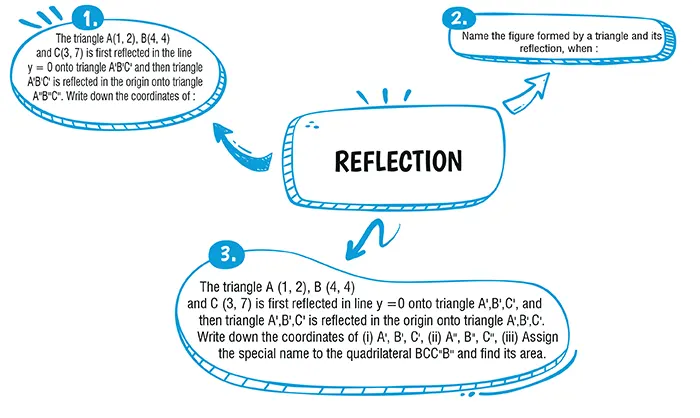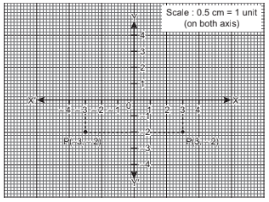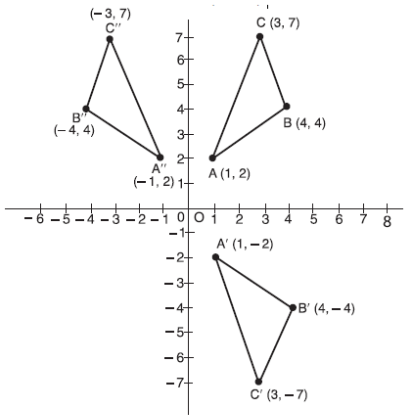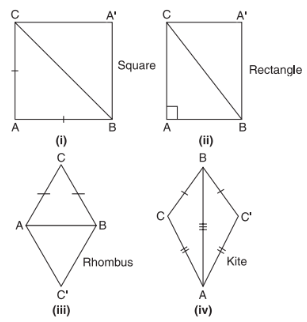Table of Contents

Ans. (b) a = – 3, b = – 2

Explanation:
Co-ordinates of P′(3, –2).
∴ a = 3, b = –2.
Ans. (c) (6, 3)
Explanation:
Globalisation has created conditions for increased job opportunities.
Explanation:
(i) A´ → (1, – 2),
B´ → (4, – 4),
C´ → (3, – 7).

(ii) A´´ → (– 1, 2),
B´´ → (– 4, 4),
C´´ → (– 3, 7).
Explanation:

Explanation:
Given, vertices of triangles are A(1,2), B (4,4), C (3,7).
(a) Coordinates A(1,2), B (4,4), C (3,7).
(b) Coordinates A”=(- 1,2), B”= (-4,4), C”= (3,7).
(c) BCC”B” is a trapezium
\text{Area of trapezium =} \dfrac{1}{2} \space \space \text{(Sum of parallel sides)} × height \\
= \dfrac{1}{2} (BB”+CC”) ×MN \\
= \dfrac{1}{2} (8+6)×3 \\
= \dfrac{14}{2} ×3 \\
= 21 sq. units.
Download Mind Map of this chapter
Download NowWant to Practice Mock Tests of this chapter
Practice NowDownload Important Questions of this chapter
Download Now| Chapter No. | Chapter Name |
|---|---|
| Chapter 1 | Goods and Service Tax (GST) |
| Chapter 2 | Banking |
| Chapter 3 | Shares and Dividends |
| Chapter 4 | Linear inequations |
| Chapter 5 | Quadratic Equations in one variable |
| Chapter 6 | Ratio and proportion |
| Chapter 7 | Factorization |
| Chapter 8 | Matrices |
| Chapter 9 | Arithmetic Progression |
| Chapter 10 | Geometric Progression |
| Chapter 11 | Coordinate Geometry |
| Chapter 12 | Reflection |
| Chapter 13 | Similarity |
| Chapter 14 | Loci |
| Chapter 15 | Circles |
| Chapter 16 | Constructions |
| Chapter 17 | Mensuration |
| Chapter 18 | Trigonometry |
| Chapter 19 | Statistics |
| Chapter 20 | Probability |
| Chapter Wise Important Questions for ICSE Board Class 10 Mathematics |
|---|
| Goods and Service Tax (GST) |
| Banking |
| Shares and Dividends |
| Linear inequations |
| Quadratic Equations in one variable |
| Ratio and proportion |
| Factorization |
| Matrices |
| Arithmetic Progression |
| Geometric Progression |
| Coordinate Geometry |
| Reflection |
| Similarity |
| Loci |
| Circles |
| Constructions |
| Mensuration |
| Trigonometry |
| Statistics |
| Probability |
CBSE Important Questions Class 10
ICSE Important Questions Class 10
CBSE Important Questions Class 10
ICSE Important Questions Class 10